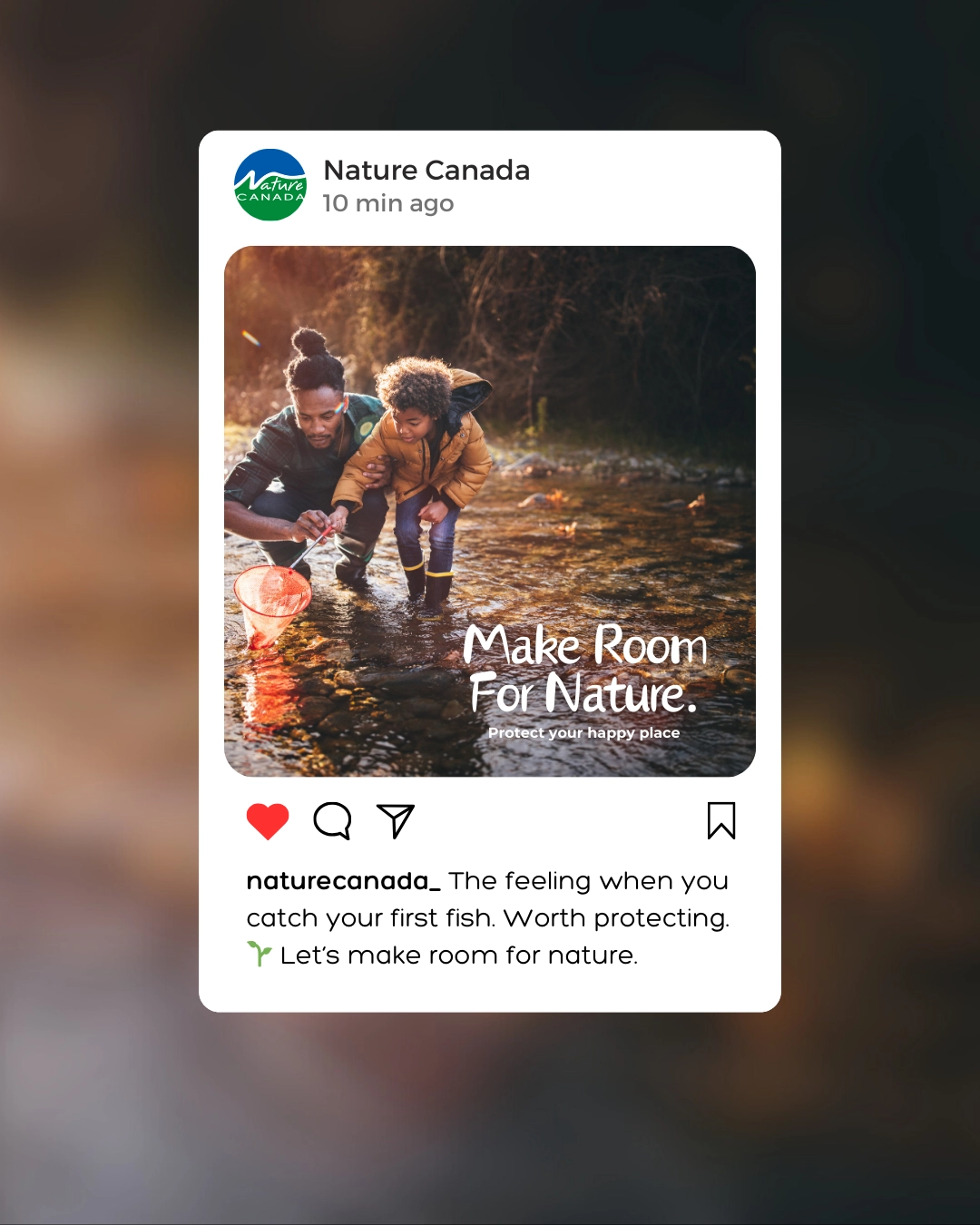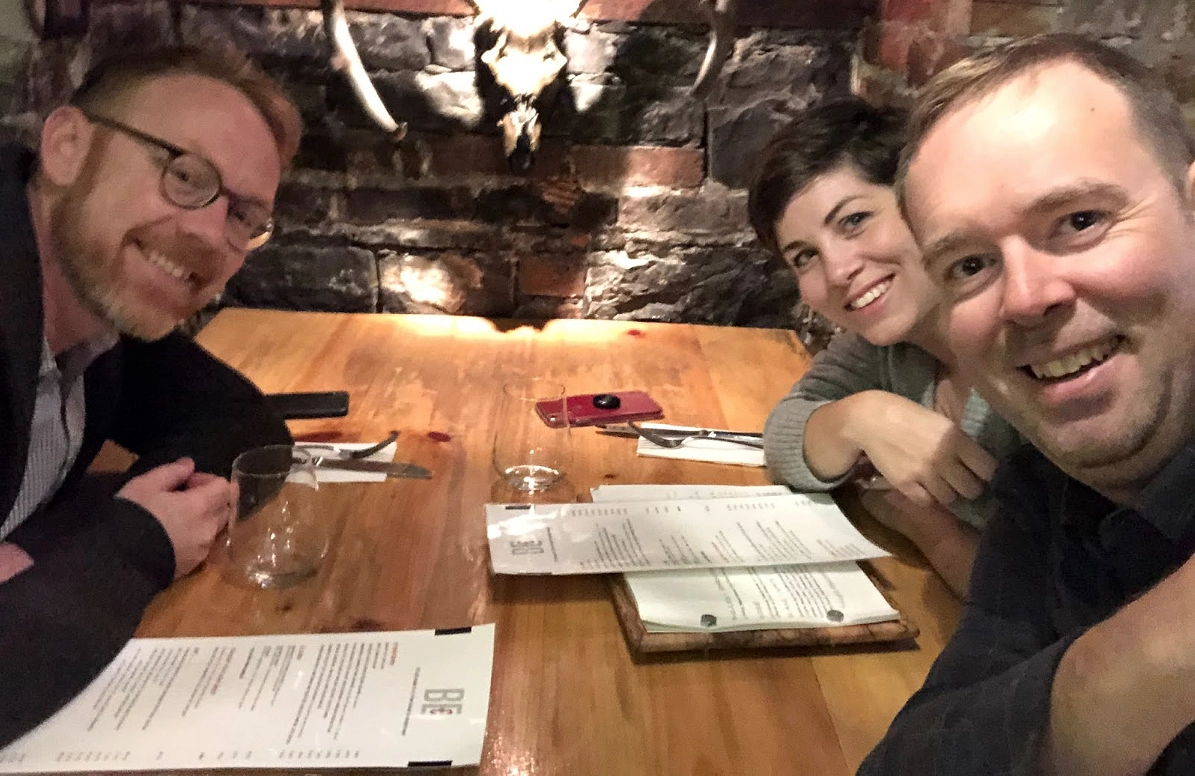Nature Canada
How Canada “Made Room for Nature”
On the brink of a biodiversity crisis, the world now has a goal to preserve 30% of nature by 2030: a look behind the scenes on how we got there.

A few years ago, the words “20 x 20” seemed only like a set of measurements to us. For Nature Canada, 20 x 20 was a goal to to get the federal government to commit to setting aside 20% of Canada’s natural spaces by 2020.
But how, in a country as vast as this one, could they convince the public (and government by extension) that we needed to officially protect these spaces?
Most Canadians don’t understand how little of our natural spaces are actually protected from development and encroachment. In Canada, you can drive for hours at a time and see kilometres of seemingly untouched forests. There can be a cognitive dissonance between knowing there is an environmental problem and feeling that to be true. However, we face a real biodiversity crisis that is only further compounded by the impacts of climate change.
In 2019 Nature Canada set a goal to build public support for a federal commitment to protect natural environments in Canada. In partnership with with Stratcom and Story|Mitchell, we worked with the environmental non-profit to rapidly test and scale a communications plan that would underscore the need for land conservation and pave the way for a landmark biodiversity preservation agreement on a global scale.
By recenterring this work around joy, we demonstrated that natural spaces are fundamental to our identity and values as Canadians. We positioned biodiversity preservation as a policy that people across the country would support.

What We Did
Our approach was to influence the federal government by demonstrating widespread support from “average Canadians” for preserving biodiversity.
We wanted to launch a mainstream media campaign over the summer months, when Canadians cherish their time in the sun, and capture the feelings that come from the special times spent with loved ones in natural spaces.
This approach emerged after surveying past campaigns advocating for these standards. We noticed that messaging from environmental NGOs conventionally focussed on endangered species and loss.
We hypothesized that different frames, focussed on positive experiences with nature, would engage a broader constituency in core political ridings where politicians keep an ear to the ground. Instead of loss, we developed messages of joy, love, and nostalgia.
Our theory of change was that the federal government would invest in preserving nature if we could show them the issue mattered to a wide breadth of Canadians, and Canadians would demonstrate interest if our communications approach was centred around positivity.

Research
Leveraging StratCom’s polling and research work, we identified core constituencies and built audience profiles that reflected this “moveable middle” audience.

Strategy
Story|Mitchell and Together used this research to hypothesize different frames for engaging these audiences, narrowing down to three creative approaches.

Testing
Together rolled out digital A/B tests through controlled ads, looking at the top performing content ideas for various audience segments.

Analysis
Analyzing the data, we found an overall approach that worked best for the majority of audiences, as well as nuances that could be leveraged for regional content or audiences who were more enthusiastic.

Rollout
Nature Canada organized a coalition of ENGOs to create a distributed approach where each organization pushed out the creative content, ads, and calls to action to their respective audiences.
How We Did It
This was a digital-first campaign that used ads on Meta to reach our target audiences across Canada. We were able to deploy multiple creative options and analyze the results before taking them back to the client for their input. Nature Canada also organized a coalition of ENGOs that amplified the campaign, working diligently to involve them in all phases of the project design.
During the creative development and testing stages, we facilitated two sessions with Nature Canada—in Ottawa and Quebec City—to get valuable insights from the coalition to ensure the best possible products. The process was deeply collaborative throughout. As a team, we captured every opportunity to leverage the breadth of skill and knowledge between our three agencies as well as the environmental expertise among Nature Canada’s staff and the coalition.
We also leveraged opportunities to turn up the pressure on the government during opportune moments, scaling our best performing content with media releases, GR strategies, and other communications materials when an opportunity emerged to pressure the government to take action.

Outcomes
Within months of our work, Nature Canada successfully advocated for preservation of 20% of Canadian natural spaces by 2020 and a sizeable commitment to this work in the federal budget. They took the millions of digital impressions and engagements on the ad campaign, and over 63,000 petition signatures, and used them to demonstrate to the sitting government that the public wanted this investment.
Love and respect for nature exists across the political spectrum. To turn that affinity into policy, our campaign created visibility of the issue, captured and documented the support from tens of thousands of Canadians, and effectively created a sense of urgency for policymakers to act.
Fast forward to the 2022 UN Biodiversity Conference (COP 15), where we had the good fortune of running into former Executive Director of Nature Canada, Graham Saul.
Since launching Make Room for Nature, Graham and his team had taken it to another level and were now working toward protecting 30% of Canada’s natural spaces by 2030, and advocating for the rest of the world to follow suit.
A few short days later, there would be a historic international agreement to achieve “30 x 30” across, with Canada’s leadership being a crucial part of that win.
Nature Canada continues to lead the way in advocating for biodiversity preservation on the national and global stage. You can follow Executive Director Emily McMillan’s call for Minister Guilbeault to release a 2030 Biodiversity Strategy that centres reconciliation and accountability.
Takeaways For Other Organizations
Unpack your assumptions before you develop your creative—90% of the time we do not represent our target audiences and need to develop research-driven messaging and visuals that are resonant.
Don’t be afraid to segment your audiences meaningfully and have different materials that speak to each. Many people get left out of our work simply because they don’t see themselves in our visuals and messaging—something we can easily remedy through testing & segmentation.
Don’t underestimate the potential for a strong persuasion campaign. Not everyone is going to take calls to action like signing petitions or writing the government, but that doesn’t mean their interest can’t be leveraged to influence policy outcomes.
Serious subjects can still benefit from playful messaging! The world feels very heavy, so tapping into emotions beyond the typical environmental playbook (think: outrage, anger, despair) can be incredibly powerful.
Leverage multiple tactics: a strong government relations strategy can be supported with the presence of a coalition, texting and calling, a digital advertising strategy, and email, when coordinated thoughtfully.
Have a clear and compelling ask for decision makers that your audience can understand. Your campaign issues are complex but your messaging shouldn’t be. Distill policy recommendations into easy-to-understand outcomes and leave the details for behind the scenes.
Interested in learning how you can apply strategic message testing in your organization? Let’s talk about an issue you’re working on.
